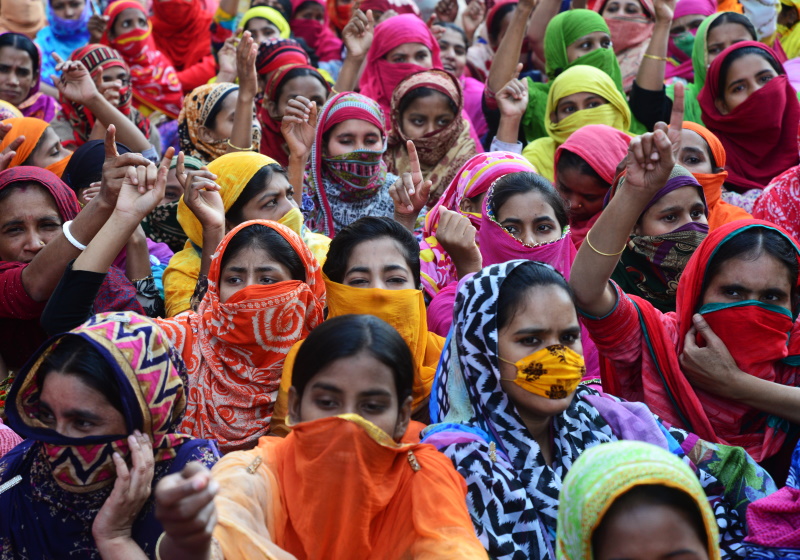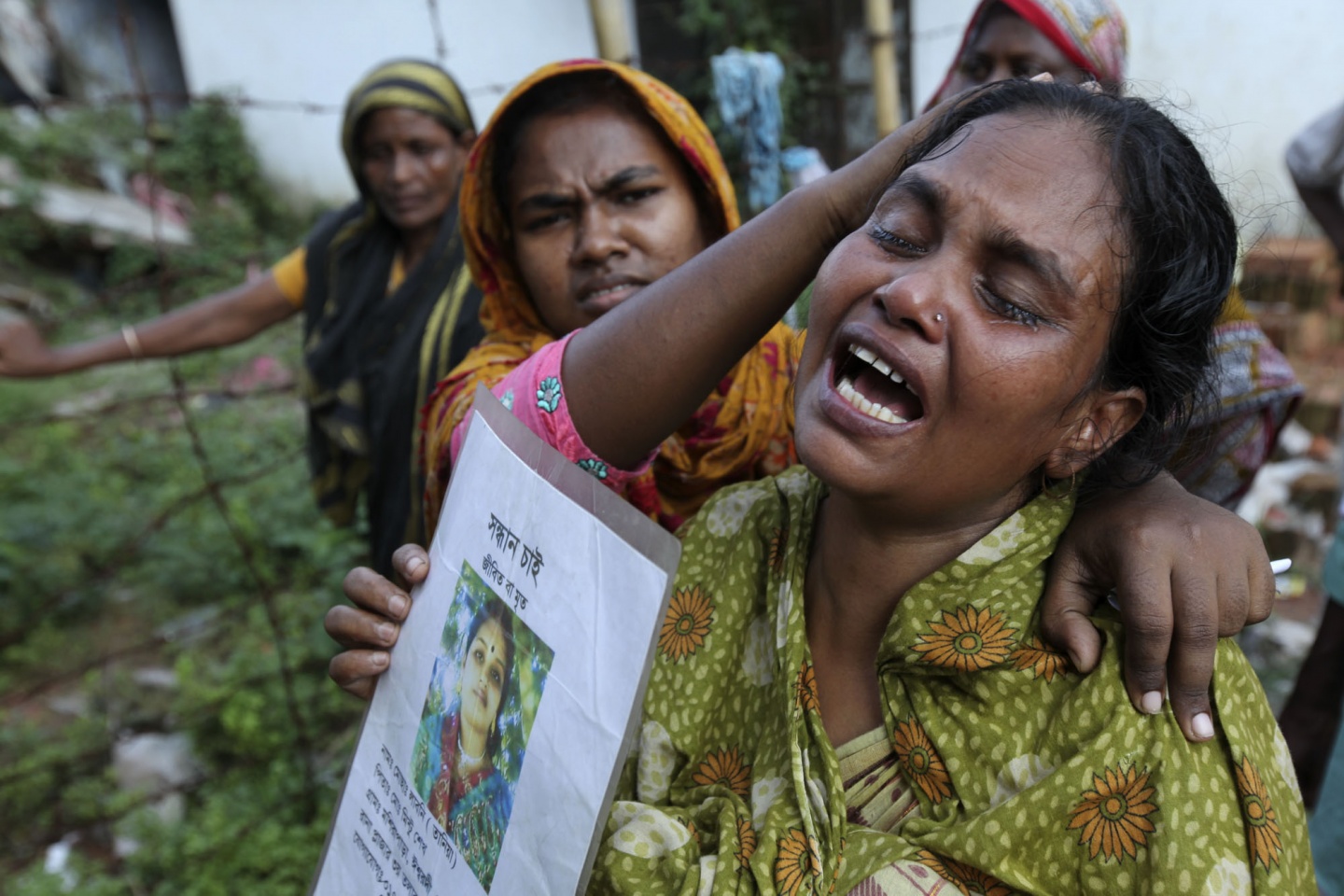Accord actively monitors child labor to protect vulnerable children and uphold ethical standards. Their vigilance helps ensure companies maintain responsible labor practices.

The issue of child labor remains a pressing global challenge, drawing the focused attention of various organizations, including Accord. Monitoring child labor is crucial for organizations to promote safe, lawful, and fair working conditions, particularly for the most defenseless members of society – the children.
Accord’s oversight is part of a broader commitment to corporate social responsibility and ethical business practices that resonate with consumers and stakeholders alike. Their efforts contribute significantly to the enforcement of labor laws and the promotion of educational opportunities for children who might otherwise be exploited in the workforce. By keeping a watchful eye on child labor, Accord actively works towards a future where children are protected, and their rights are taken seriously by industries worldwide. Through this responsible monitoring, the organization advocates for progress, transparency, and change, ensuring that child welfare is at the forefront of business ethics and practice.
Child Labour: A Global Challenge
Child labour affects millions of children globally. It steals their childhood. UNICEF estimates that 150 million children are engaged in work. This issue is massive and complex. Many countries have entered into various international treaties to tackle this problem. The United Nations sets laws to protect children. The International Labour Organization also fights against child labor. They create standards all countries should follow.
| Law/Treaty | Objective |
|---|---|
| ILO Convention No. 138 | Minimum age for work |
| ILO Convention No. 182 | Worst forms of child labour |
| UN Convention on the Rights of the Child | Child rights protection |
Each law aims to eradicate precarious work for children. They push countries to make better rules. Every child deserves education and freedom. These laws work to give them just that.

Credit: www.change.org
Root Causes Of Child Labour
Child labour stems from many complex issues. Poverty is a key one. Families often rely on children to help make ends meet. Sometimes kids are the main income earners. This economic necessity pushes them into work. It’s a tough cycle to break. Education barriers also play a big role. Schools may be too far or expensive. Many kids cannot read or write because of this. Without education, their job options are very limited. They end up in labour early, missing out on childhood and learning.
Consequences For Young Workers
Child labour greatly harms children’s health and growth. Kids working long hours miss important growth milestones. They often face serious injuries and illnesses due to harsh conditions. This can lead to lifelong health issues. Limited access to education hinders children’s future. They lose the chance to learn vital skills. Without education, kids struggle to escape poverty later in life. Their job options become very limited. This cycle makes future good work much harder to find.
Accord’s Role In Combatting Child Labour
Accord vigilantly addresses the issue of child labour. Their mission is to eradicate this global concern. They are dedicated to promoting fair labor practices. Their objectives include protecting children’s rights and ensuring their well-being. Through various strategies and programs, Accord actively participates in this fight. They collaborate with local communities to raise awareness. Educational initiatives are funded to prevent child exploitation. Critical support systems for affected children have been established. These efforts make a significant difference.
Case Studies: Accord’s Impact
Accord has taken firm steps to combat child labor worldwide. Various nations report noteworthy progress thanks to these efforts. Bangladesh witnessed a remarkable decrease in underage factory workers, with Accord’s vigilant monitoring systems in place. In India, Accord’s innovative education programs have empowered children to pursue schooling over labor. Nonetheless, challenges persist. Some regions report resistance from local businesses, struggling to transition to child-labor-free operations. Accord remains resolute in its mission, working tirelessly to overcome such obstacles.
| Country | Successes | Challenges |
|---|---|---|
| Bangladesh | Child labor decline | Monitoring system adoption |
| India | Child education programs | Economic dependencies on child labor |

Credit: bhr.stern.nyu.edu
Collaboration With Governments
Accord places a strong emphasis on ending child labor practices globally. Working closely with government bodies is crucial. This partnership aims to influence policies and push for legal reforms that protect children’s rights. By uniting with local authorities, Accord strives to create a widespread impact. They foster initiatives that eradicate the roots of child labor. These efforts are steps towards sustainable change in societies. Local partnerships mean stronger enforcement of anti-child labor laws. They ensure compliance and engage communities in the fight against this injustice. Together, change is not just possible, but inevitable.
The Role Of Education
Education is critical in the fight against child labour. By promoting school enrollment, we empower children with the knowledge and skills for a better future. Accessible education encourages families to invest in their children’s potential. Schools act as safe havens and provide a structured environment for learning and growth. Support for non-formal education is equally important. It offers flexible learning options for children who cannot attend traditional schools. Community learning centers and vocational training can equip youngsters with practical skills. This reduces their vulnerability to exploitation and increases their chances for employment.

Credit: www.industriall-union.org
Involving The Business Community
Eye on Child Labour focuses on engaging the business community in eradicating child labor. Businesses hold a key role, given their vast influence and resources. Their corporate social responsibility (CSR) policies can include child labor prohibition and safe working conditions. It is crucial for companies to implement effective supply chain monitoring. This ensures their products do not support child labor. Ethical practices must be a priority. Companies should verify suppliers and demand ethical labor standards. Businesses can join forces to set industry standards. Consumers are increasingly choosing brands with strong CSR. Companies, hence, not only help children but also build positive brand images. This approach can lead to higher consumer trust and potentially increased profits. The goal is clear – no child should be in the workforce.
The Power Of Public Awareness
The Power of Public Awareness plays a crucial role in battling child labour. Effective campaigns and advocacy efforts spread vital information. They unite people to fight against child exploitation. Using creative strategies and outreach, these campaigns educate and empower communities. Media and storytelling also shape public perception. They tell stories that touch hearts and inspire action. Engaging content across various platforms raises the visibility of the issue. Such content often leads to greater support and involvement from the public.
Empowering Affected Communities
Empowering affected communities is crucial to combat child labour. Providing vocational training to families gives them skills for better jobs. This ensures a stable income, removing the need for child labour. It is vital to focus on sustainable income sources. Equally important, women and youth leadership programs foster empowerment. They encourage participation in community decisions. These programs help to build strong leaders. These leaders can then fight against child labour. Engaging women and youth creates a ripple effect for positive change.
The Role Of International Organizations
Accord closely monitors child labor to ensure children’s rights and well-being. International groups join hands to tackle this critical issue. They work with organizations like UNICEF and ILO. Together, they aim to create safer environments for children worldwide. Their efforts include establishing global initiatives that focus on education and reform. Generous funding is necessary. It supports programs that encourage better work conditions and legal frameworks.
| Partnership | Objective | Action |
|---|---|---|
| UNICEF | Protect Rights | Policy Development |
| ILO | End Child Labor | Legislation Support |
By pooling resources and knowledge, they drive impactful changes. With sustainable development goals, they seek to eradicate child labor. This work is essential for a brighter future for all children.
Technology And Innovation
Data-driven strategies are key in tackling child labor. Technology now lets us collect big data easily. This data helps us understand child labor patterns. We can see where, why, and how kids are working. Machine learning tools can predict labor trends. This lets us stop child labor before it starts. Tech solutions, like apps and web platforms, allow for real-time reporting of violations. Communities can alert authorities quickly. GPS tracking can also protect kids by monitoring their locations.
Looking Ahead: The Future Of Child Labour
The fight against child labour is gaining momentum worldwide. Efforts by governments, NGOs, and international organizations are prevalent. These groups work tirelessly to create awareness and promote education. Forecasts suggest a continued decline in child labour rates if current efforts persist. Strategies include economic support for families and strict enforcement of labour laws. The use of technology and data also helps to monitor and prevent child labour practices. Educational programs are crucial as they offer alternative paths for children. With continued vigilance and global cooperation, we aim for a future where all children can pursue their dreams, free from exploitation.
Frequently Asked Questions For Why Accord Have A Eye On Child Labour?
Why Did Labor Unions Oppose Child Labor?
Labor unions opposed child labor to protect children’s welfare, ensure fair wages for adult workers, and promote education for minors.
Why Was Child Labor A Concern?
Child labor raised concerns due to its detrimental impact on children’s health, education, and overall well-being. It often involved exploitative, hazardous work that deprived children of a normal childhood.
What Is The Symbol For Anti Child Labor?
The symbol for anti-child labor is a red handprint. It represents the global movement against child labor, symbolizing a ‘stop’ action toward this practice.
Why Were Children Forced Into Child Labor?
Children were forced into labor due to poverty, lack of education, family debts, and exploitative labor demands. Economic desperation often led families to send their children to work under harsh conditions for meager earnings.
What Is The Accord On Child Labour?
The Accord on Child Labour is a commitment among businesses, governments, and NGOs to eradicate child labor practices worldwide.
How Does Child Labour Impact Businesses?
Child labour can harm businesses by damaging reputations, leading to boycotts, and creating an unstable supply chain.
Why Do Companies Monitor Child Labour?
Companies monitor child labour to ensure ethical practices, comply with laws, and maintain consumer trust.
Conclusion
Child labor is a global issue that merits our attention. The Accord seeks to highlight this important matter, urging action. Their focus underscores the pressing need for solutions, to ensure future generations can thrive. Let us join hands in this vital cause, for the betterment of children worldwide.
